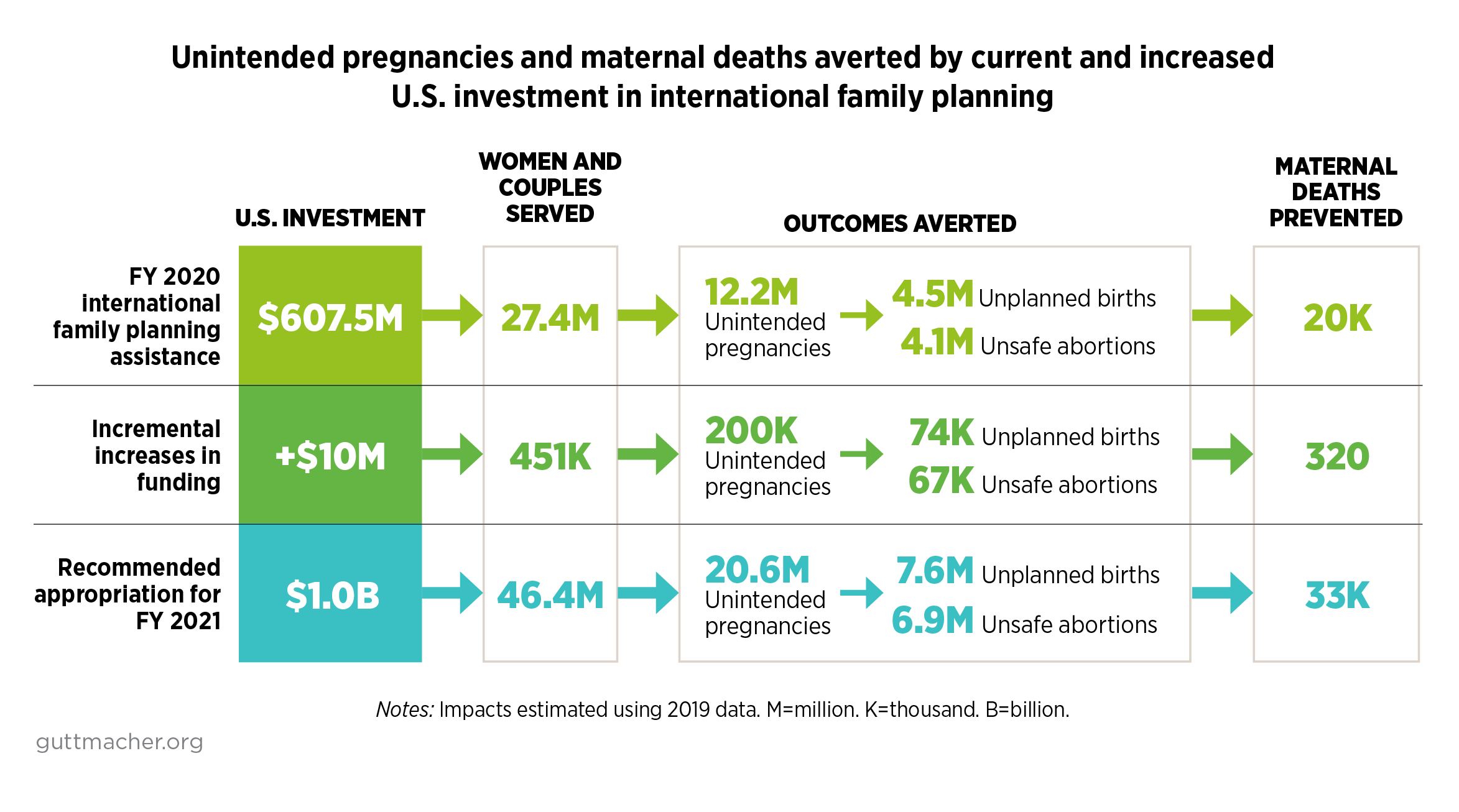This publication has been updated, please see here for the latest version.
Investments in sexual and reproductive health and rights have profound and measurable benefits. Such investments not only promote health and well-being throughout people’s lives, but also lead to improvements in gender equity, political stability, economic development and environmental sustainability.1
U.S. support for international family planning
Family planning is a fundamental component of comprehensive sexual and reproductive health care. The United States, through the U.S. Agency for International Development (USAID), plays a critical role in increasing access to voluntary family planning information, services and supplies in more than 30 countries where the need is greatest. USAID’s reproductive health portfolio also includes efforts to end child marriage and gender-based violence, integrate family planning with maternal and child health and HIV programming, and address other crosscutting factors that shape individual, family, and community sexual and reproductive health and rights.
To complement its bilateral work, USAID collaborates closely with the United Nations Population Fund (UNFPA), a multilateral organization that focuses specifically on the delivery of family planning services and maternal and child health care in 150 countries. U.S. Congress has appropriated resources for UNFPA for 2020; however, the Trump administration is withholding those funds from UNFPA and has instead transferred them to USAID for bilateral activities. The Trump administration’s decision not to provide appropriated resources to UNFPA undermines that organization’s important role in providing family planning and other sexual and reproductive health services to vulnerable and marginalized populations.
Benefits of current and increased investment
In federal fiscal year (FY) 2020, Congress appropriated $607.5 million in U.S. assistance for family planning and reproductive health programs overseas, including $32.5 million for UNFPA. The graphic below shows the benefits of this investment in terms of unintended pregnancies, unplanned births, unsafe abortions and maternal deaths averted, as well as the additional benefits that would accrue for every $10 million increase in funding. We also estimate the benefits that would accrue if the United States increased its investment to $1.03 billion in FY 2021. This amount, recommended by the International Family Planning Coalition and other groups, represents the investment needed for the United States to move toward contributing its fair share to addressing family planning needs worldwide.2
Methodology and sources
Estimates of the impacts of current and increased investment are calculated by dividing family planning allocations to countries and regional offices for FY 2019 by estimated 2019 country-level per-user costs and impacts, which come from the most recent comprehensive analysis of costs and impacts of family planning in low- and middle-income countries.3–5 Impacts per user were estimated as the difference between the annual number of events that would occur if all women wanting to avoid pregnancy used modern methods and the number that would occur if they relied on traditional or no methods.4 Funding allocated to regional offices, rather than countries, was assigned cost and impact estimates based on the countries covered by that family planning funding. Estimates for UNFPA funding are based on information from USAID about how USAID’s Bureau for Global Health intended to distribute the $32.5 million appropriated for UNFPA in FY 2018.6
Just the Numbers estimates for 2020 are based on an updated methodology and are not directly comparable to prior iterations of this analysis. The estimates do not reflect the negative impact of the global gag rule, which threatens to undermine the effectiveness of these critical programs by excluding some of the most capable health organizations. It will be some time before the full population-level impact of the global gag rule can be documented.

